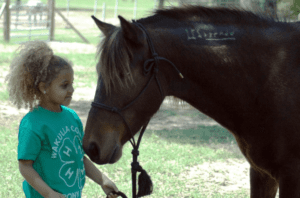As part of the Bureau of Land Management (BLM’s) efforts to manage and protect wild horses and burros on public lands, the agency and its partners helped place 8,045 wild horses and burros into new homes in Fiscal Year 2023, saving approximately $181 million in taxpayer money.
“Giving a good forever home to a wild horse or burro is not only a rewarding experience, but it helps support our efforts to keep the wild herds and their habitat healthy on public lands,” said BLM Director Tracy Manning. “I am incredibly grateful and humbled by those who choose to adopt a wild horse or burro.”
Of the wild horses and burros placed into new homes, 6,220 animals were adopted, 1,798 were sold, and 27 were transferred to other government agencies. This is the second-highest number of animals placed into new homes in more than 25 years.
Wild horses and burros adopted through the BLM’s Adoption Incentive Program accounted for approximately 36 percent, a total of 2,908 animals, placed into new homes in Fiscal Year 2023.
The Adoption Incentive Program offers $1,000 upon titling of a wild horse or burro, at least one year from adoption date. The incentive program has been credited with reinvigorating adoptions of wild horses and burros since its launch in 2019.
The BLM offers wild horses and burros for adoption, sale, and transfer in support of its efforts to manage and protect free-roaming herds on public lands as required by the 1971 Wild Free-Roaming Horses and Burros Act.
Most herds on public lands are located in arid environments and lack natural predators that can control herd growth.
As a result, herds grow quickly and can overwhelm the food and water available to them, which not only damages the land they need to survive, but it can also eventually lead to starvation and thirst.
To protect wild horses and burros from overpopulation, the BLM periodically gathers excess animals and makes them available to qualified homes.
With some time and patience, adopting a wild horse or burro can be a very rewarding experience, Manning said.
Wild horses and burros are extremely adaptable and can be trained for many uses, according to Manning.
Wild horses have become champions in dressage, jumping, barrel racing, endurance riding, and pleasure riding, while burros excel in driving, packing, riding, guarding, and serving as companion animals.
Both wild horses and wild burros are known for their sure-footedness, strength, intelligence, and endurance.
More than 290,000 wild horses and burros have been placed into new homes since the Wild Free-Roaming Horses and Burros Act was passed in 1971.
The BLM could not have accomplished this success without the help and support of its many partners and volunteers who work tirelessly on behalf of the nation’s wild horses and burros, Manning said.
The adoption process includes several provisions designed to ensure animals placed in private homes receive good care.
In instances the BLM becomes aware of an untitled animal being sold without authorization, the agency takes immediate action to retrieve the animal and sanction the adopter.
The BLM manages more than 245 million acres of public land located primarily in 12 western states, including Alaska, on behalf of the American people.
The BLM also administers 700 million acres of sub-surface mineral estate throughout the nation.
+++30++
